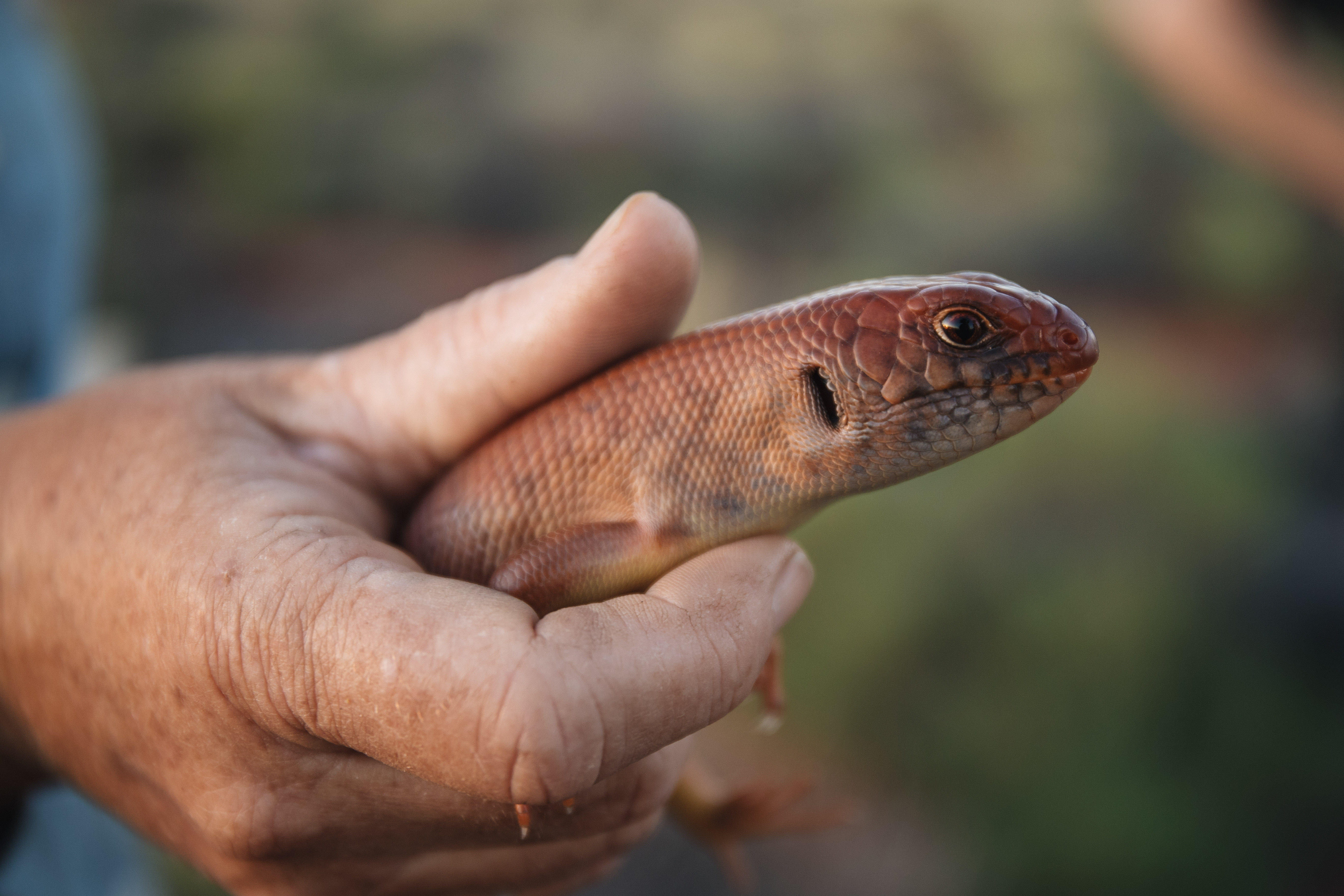Media release
From:
This month, Traditional Owners and Indigenous desert ranger groups from across an area spanning 500,000 km2 – seven times the size of Tasmania – are joining forces with scientists, land managers and the Federal Government.
They're coming together for the largest collaborative threatened species monitoring event in the Australian desert. And they're focussing on the iconic and culturally significant Great Desert Skink.
The event is known as Mulyamiji March.
During the month of March, 20 Indigenous ranger teams from the Northern Territory, Western Australia and South Australia will combine their expert tracking skills and local knowledge with the latest and greatest science and technology. The Indigenous rangers will monitor Great Desert Skink populations across the desert, covering approximately 100 survey sites.
Meet the Mulyamiji
The Great Desert Skink is also known as Mulyamiji, Tjakuṟa, Tjalapa, Warrana and Nampu.
It's a species that occurs almost exclusively on Aboriginal land and it has strong Tjukurrpa (Dreaming songs, sites, stories) across the desert.
Measuring up to 45cm long and weighing up to 300g, the Tjakura is a large orange (or sometimes grey) skink of similar size to a blue-tongue lizard. It lives in a big communal family burrow system with a nearby latrine (communal toilet) where the family all deposit their scats.
The Tjakuṟa is nationally classified as Vulnerable. It's threatened due to the combined impacts of wildfire and feral cat predation. However, the iconic species continues to thrive in areas where Indigenous rangers conduct traditional burning and cat management.
Integrating local Indigenous knowledge with western science
Indigenous rangers have partnered with scientists on a project through the Australian Government’s National Environmental Science Program’s Resilient Landscape Hub to ensure that the science behind the surveys is robust, and so that the data collected can indicate if the Tjakura population is increasing or decreasing across the country.
This comprehensive survey – coordinated by the Indigenous Desert Alliance – has been named Mulyamiji March. The survey could not be achieved without the work and expertise of Indigenous ranger groups who will build on their 2023 monitoring where collectively, 90 Tjakura sites were surveyed, and 541 burrow systems found.
This year, through some fun competition between the participating ranger groups, the teams are hoping to cover even more survey sites, as they march across the desert, searching for Mulyamiji!
Celebrating the start of Mulyamiji March
Mulyamiji March is the largest collaborative threatened species monitoring program in the Australian desert.
20 Indigenous Ranger Teams will survey 100 sites across three states, including Northern Territory, Western Australia and South Australia.
It will be launched with Aṉangu Traditional Owners at Uluṟu-Kata Tjuṯa National Park on 12 March 2024.
Multimedia





 Australia; SA; WA; NT
Australia; SA; WA; NT



